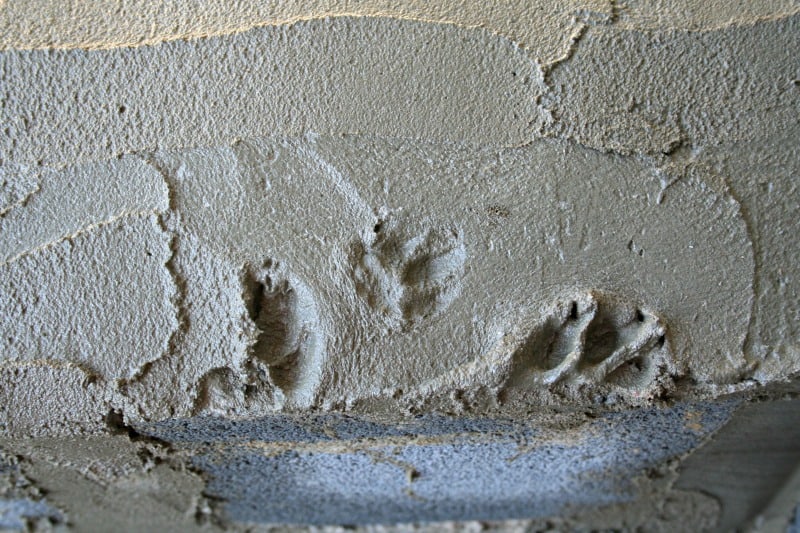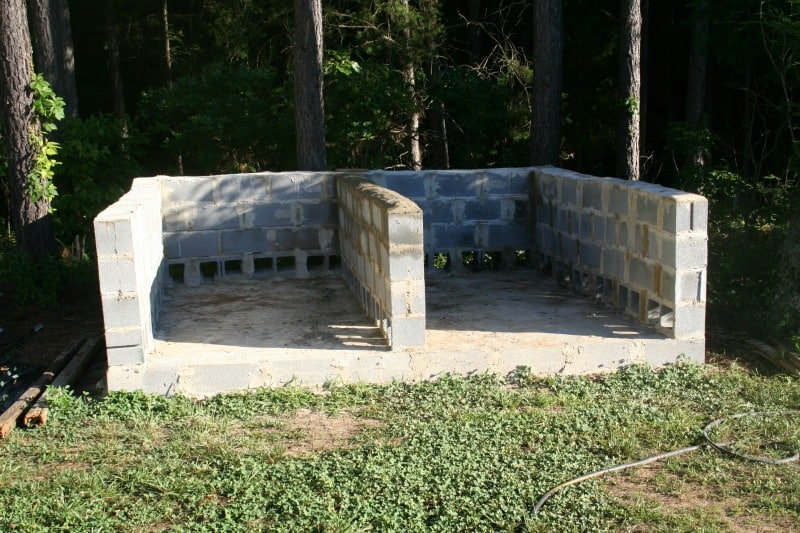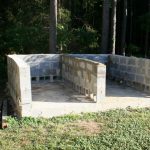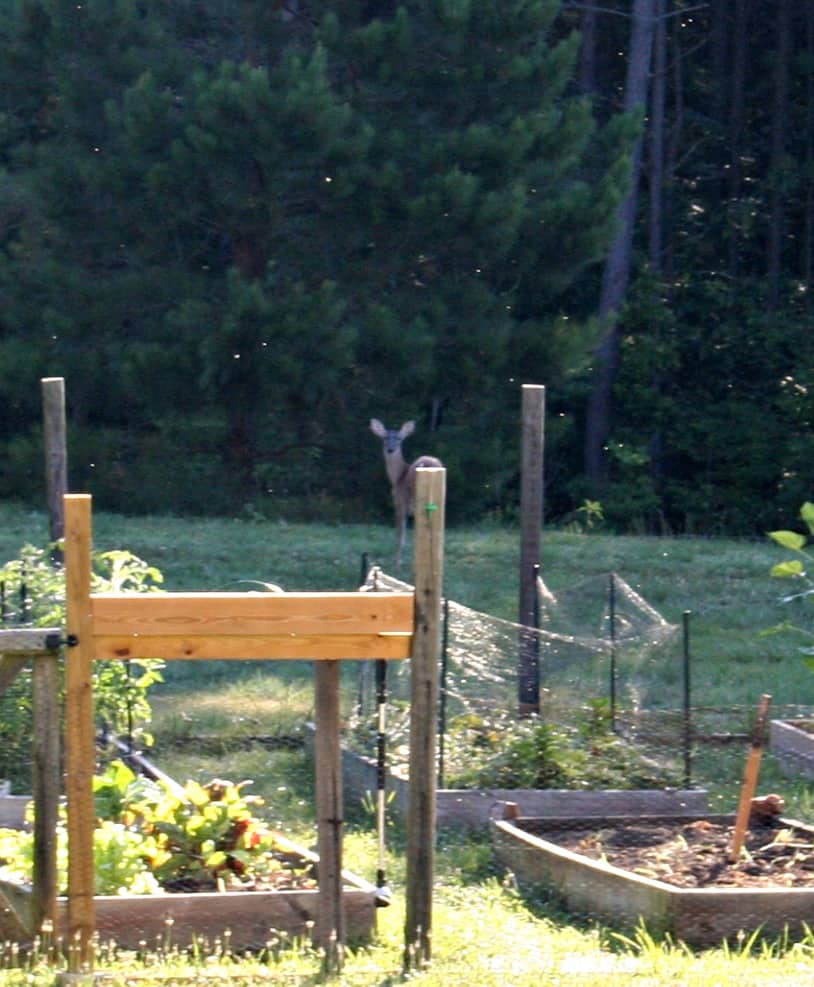The new composting system is finally complete! We started this project in March, but one setback after another made me dub this one the never-ending project. Well, even the longest project has an end. The new composting system was completed last night, and of course, christened by the cats.

The cats have been so good throughout construction. On the last night, Rocky decided to try leaping onto the wet cement. He learned quickly the error of his ways (and he’s fine – we cleaned him up immediately.)

Here it is! My new, HUGE composting system. The inputs go into the left side. When I turn the bed, the new, usable compost goes into the right side.

We built the slab on a slight slope. Notice the holes in the blocks along the bottom – that’s so that air can mix with the compost, and water can drain off. We tested the slope and water runs out the back and away from the garden shed.

We just turned the masonry blocks on their sides for the bottom portion. Notice my beautiful cement work? Just kidding. It’s ugly but functional. I don’t think the microbes will care about my cement neatness.
The New Composting System
We built the new composting system just to the east of the garden shed, and only a few steps from the vegetable garden. The old system, which was simply a pile in the woods held together with a border of leftover masonry stones from when they built our house, necessitated pushing a heavy wheelbarrow uphill and many hundreds of feet to the vegetable garden. Now with the new system, I can more easily access the compost.
Another feature we built into the new pile is the cement slab. The old pile was layered directly onto the soil, which is fine except that it’s at the base of several pine trees. The trees grew their roots into the compost pile, and it was like an all-you-can-eat banquet for their roots. Digging compost difficult because the roots were so tangled into the compost. Now with the thick cement slab, we hope it will discourage the trees!
The slab is built on a slope so that water runs out of the pile and downhill, away from the house and garden shed. The holes along the bottom layer of stone not only allow water to drain away but will mix air into the pile. Both water and air are necessary for good composting.
Another feature with the new pile: heat! The old pile was a cold pile, which decays slowly. It was in full shade and it took a long time for the microorganisms to break down the plant materials into compost. The new pile faces south, and gets plenty of midday sun. The solar heat should create plenty of warmth for the microbes to do their dirty work and create lush, gorgeous compost for the garden.

The vegetable garden this morning. The composting system is to the right of the shed, behind the garden. It’s very convenient for moving compost into the raised bed vegetable garden.
A few words on my elaborate composting system: I have no idea if this invention will work as well as I hope. It’s really an experiment. I did not have a plan – my husband and I just built what we thought would work best.
It’s also not necessary for the average home gardener to have such an elaborate system. We’re gardening on many acres, and have 12 raised beds plus 30+ fruit trees and elaborate flower gardens to tend. All of these plants could benefit from compost and the soil enrichment that compost adds. So we built big, and hope for the best.
For your home garden, please see my free garden guide on How to Build a Compost Pile.
Happy gardening! Keep growing!
We christen the compost pile tonight with a big old pail of kitchen scraps!
#firstdayofSummer







[…] Adding compost from the new composting system. […]